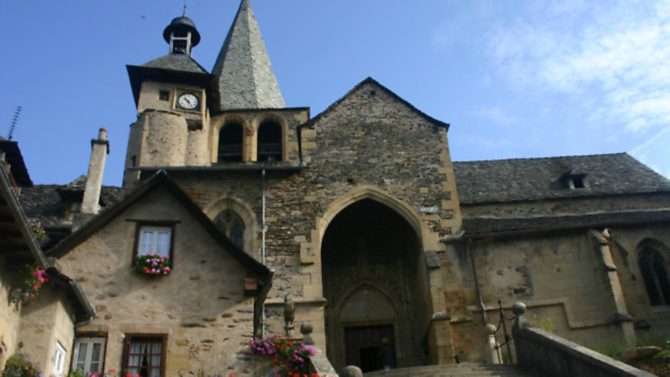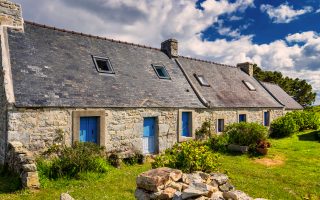Buying historic properties

Vanessa Couchman explores the practical issues around buying listed buildings or historic homes in France
Historic buildings abound in France, from barns to châteaux, and they needn’t cost the earth. But you need to know in advance what you are letting yourself in for, whether you buy a ruined shell or an immaculately-renovated property.
France has a similar system to England for listing buildings of historic or architectural interest. This aims to preserve and protect them as part of France’s cultural heritage. Known as monuments historiques (MH), there are two classification levels. Classement as an MH is the higher level and designates a monument of national importance, like the Château de Versailles. Inscription sur l’inventaire supplementaire des Monuments Historiques (ISMH) covers monuments of regional or local importance, such as smaller châteaux or manor houses. A listed building is commonly known as either classé or inscrit.
Fewer buildings are listed in France than in England, where virtually every building over a certain age is grade-listed. The total number of listed MH in France is around 40,000 (12,000 classés and 28,000 inscrits), of which nearly half are in private hands. In comparison, England has almost 375,000 listed buildings. Aside from officially listed buildings, many thousands more in France are historic monuments in all but designation. I’ll focus on these and the MH inscrits, as being of more interest to property hunters than national monuments.
The French Ministry of Culture has overall responsibility for MH. Below that, a range of organisations apply government policy, provide advice and carry out inspections. Broadly, once a building is listed, the Service territoriale de l’architecture et du patrimoine (STAP) oversees its protection and preservation. Within STAP, the Bâtiments de France (BDF) architects provide expert advice and approve renovation plans. If you own a listed building you are likely to have most contact with them.
BUYING A HISTORIC HOME
Carl Scholfield of Lafite Scholfield Belles Demeures says there are plenty of historic buildings available. Many of those on his books, such as an immaculate Renaissance château in Lot-et-Garonne, are not listed, although they certainly would be in the UK. They are therefore subject to the normal rules governing their sale and renovation.
However, if an MH takes your fancy, French bureaucracy is never simple and there are rules about what you can do with a monument historique inscrit. The vendor must inform the purchaser of its status before the sale and notify the local préfet. Carl Scholfield also says, “If you need a mortgage to buy a listed property, the banks don’t like to touch them. But some specialist outfits provide finance.”
If you plan to renovate the property, lawyers advise putting a clause suspensive into the compromis de vente, or pre-sale agreement, making the sale conditional upon obtaining planning permission. Scholfield says, “If you have plans to renovate, you need to make enquiries first with the Bâtiments de France architects.” Even if the house itself is not listed, there are restrictions on what you can do if it is within 500 metres of an MH or in a Plus Beaux Villages.
RESTORATION AND MAINTENANCE
The owner is responsible for the preservation and upkeep of an MH. To modify a listed building, even to replace the shutters, you need to inform the préfet in advance and obtain the necessary permission. The process can take several months but you cannot start work without it. This is normally granted subject to restrictions, such as the type of materials permitted.
BDF architects supervise the work up to completion. Even if a house is not listed, any plans must be passed by them if it is close to a listed site. Scholfield says, “The general opinion is that you can’t do anything to a listed building but the BDF architects are surprisingly open to modern touches on ancient houses. An 11th-century fortified château I sold last year was hyper-modern inside and one entire wall was glass.”
Once permission is granted, the owner of an MH inscrit must engage an architect to oversee the work. But there is no restriction on the architect or building firm you can choose to carry it out.
Grants are available for the restoration and on-going maintenance of listed buildings. The amount you can claim will depend on the level of classification and other factors but the state will finance up to 40% of the total bill. To find out if you are eligible, contact the Direction Régionale des Affaires Culturelles (DRAC). Delays and significant restrictions can apply.
For non-listed buildings local grants might be available but the amount will depend on local discretion. In that case, contact the Direction Départmentale de l’Équipement (DDE) for your département. You can also apply for a Label Fondation du Patrimoine, provided the property has cultural significance and is visible from a public road. Renewable every five years, this gives access to subsidies for exterior restoration work and fiscal advantages.
You can enjoy certain tax advantages as the owner of an MH. Certain renovation costs are 100% deductible against tax, as well as the costs of opening to the public. Other costs, such as caretaking or works not eligible for grants, are also 100% deductible if the building is open to the public for at least 40 days, July to September, or 50% deductible if it is not. The rules are complex and, as always, specialist advice is essential.
ONGOING LIVING COSTS
Even if you buy a renovated property the cost of upkeep and repairs will add up for a listed building. Using specialist materials and artisans is expensive. Also, any work must conform to the BDF architect’s requirements.
You also need to consider buildings and contents insurance. The house must be insured for the cost of rebuilding it, including experts’ fees and demolition costs, which are likely to be expensive. Also, listed buildings pose more of a security problem. All these factors are reflected in the cost of insurance and many traditional insurers will not cover MHs. It pays to get guidance from specialist organisations such as Vieilles Maisons Françaises, which provides expertise and advice to owners of old properties, not only listed buildings.
So, before taking the plunge and buying that dilapidated château or former monastery you need to consider some important issues. But with careful planning you can turn the dream into a reality.
USEFUL WEBSITES
www.vmfpatrimoine.org – Vielles Maisons Françaises, protects French architectural heritage.
www.fondation-patrimoine.org – La Fondation du Patrimoine, preserves non-listed heritage.
www.culture.gouv.fr – Ministry of Culture: information about listed buildings.
www.anah.fr – Agence National pour l’Amélioration de l’Habitat: home improvement grants.
www.lafitescholfield.com
Share to: Facebook Twitter LinkedIn Email


